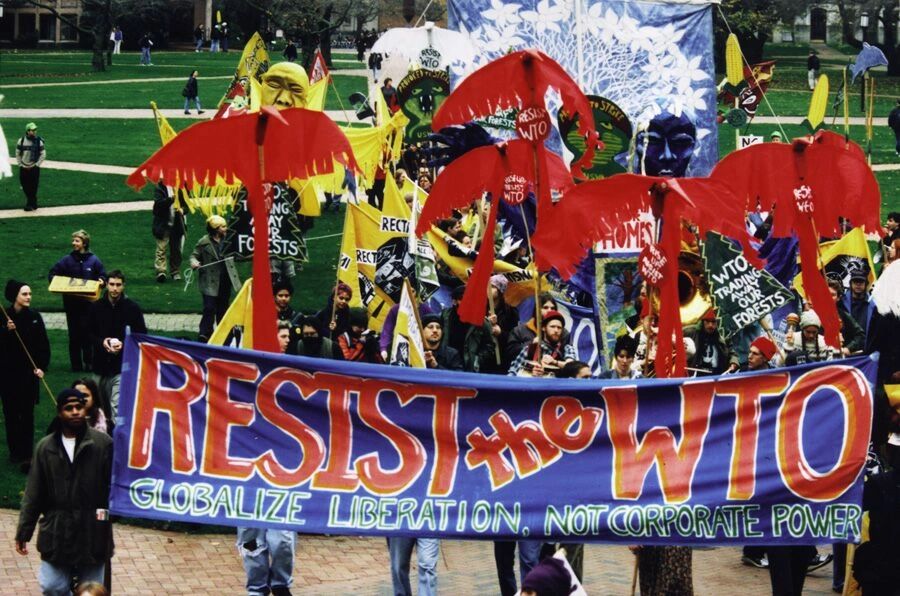
Okay, here is a 1200-word article in English about the 1856 Battle of Seattle, framed as a foundational legend of America, written in a journalistic style.
The Echoes of a Forgotten Conflict: How the Battle of Seattle Forged a Legend
Beneath the shimmering glass and steel of modern Seattle, a city synonymous with innovation, coffee culture, and technological prowess, lies a deeper, more turbulent history. It is a history etched not in server farms or artisanal breweries, but in the very soil, a narrative of clash, resilience, and the birth of a legend. This is the story of the Battle of Seattle, an often-overlooked skirmish on January 26, 1856, that, while brief and relatively bloodless, irrevocably shaped the destiny of a burgeoning city and became a foundational, albeit contested, chapter in the legends of America.

To understand the "Battle of Seattle" as a legend, one must first peel back the layers of romanticized history and confront the raw realities of westward expansion. American legends are not solely tales of mythical beasts or heroic quests; they are often the crucible of identity, forged in the fires of conflict, migration, and the clashing of cultures. The 1856 battle, part of the broader Puget Sound War, perfectly encapsulates this, embodying the violent birth of a new American frontier and the tragic displacement of its original inhabitants.
A Land of Promise and Pre-Emption
Before the arrival of the first white settlers, the Puget Sound basin was a verdant Eden, a land of abundant salmon, rich forests, and intricate waterways. For millennia, it had been home to the Coast Salish peoples – the Suquamish, Duwamish, Snoqualmie, Muckleshoot, and others – whose lives were interwoven with the rhythm of the land and sea. They lived in sophisticated, interconnected communities, guided by an intimate knowledge of their environment and a deep spiritual connection to their ancestral territories.
The arrival of the Denny Party in 1851 at Alki Point marked the beginning of a rapid transformation. These ambitious pioneers, driven by the dream of establishing a new metropolis, quickly recognized the strategic value of Elliott Bay. They envisioned a bustling port city, a gateway to the Pacific, and set about staking their claims. Among the prominent figures of this era was Chief Si’ahl (anglicized as Chief Seattle), a leader of both the Suquamish and Duwamish tribes, known for his wisdom, oratorical skills, and initial pragmatism in dealing with the encroaching settlers. His leadership, even in the face of inevitable change, sought a path of accommodation, a testament to his people’s desire for peace.
However, the relentless tide of Manifest Destiny was not easily swayed by diplomacy. The newly appointed territorial governor, Isaac Stevens, arrived in 1853 with a clear mandate from Washington D.C.: acquire Native American lands to facilitate white settlement and resource extraction. Stevens, a man of military background and unwavering ambition, embarked on a series of treaties that would become notorious for their coercive tactics and the stark cultural chasm they exposed.
The Treaty Table and the Seeds of War
The Treaty of Point Elliott, signed on January 22, 1855, just a year before the battle, was a pivotal moment. Under immense pressure and often lacking full comprehension of Western legal concepts of land ownership – which fundamentally differed from their communal understanding – representatives from numerous tribes ceded vast tracts of land to the U.S. government. In return, they were promised small reservations, hunting and fishing rights "at all usual and accustomed grounds and stations," and annuities.
But the ink was barely dry before the treaty’s promises began to unravel. Settlers, eager for land, often ignored the designated reservation boundaries. Native fishing and hunting rights were routinely violated. The annuities were slow to arrive, if at all. For the Indigenous people, it was a betrayal of trust, a systematic stripping away of their ancestral heritage and way of life. This growing disillusionment, coupled with the brutal actions of some settlers and the provocative policies of Governor Stevens, ignited a powder keg across the territory.

"The white man’s law is a fence that divides the land, but our ways are like the wind that moves freely over it," an elder might have observed, encapsulating the fundamental misunderstanding that fueled the conflict. The treaties, intended by Stevens to prevent war, instead became its primary catalyst.
The spark that truly ignited the Puget Sound War came from the interior, with the Yakama War erupting in October 1855, fueled by similar grievances over land and broken promises. This conflict quickly spread, sending ripples of fear and defiance throughout the region. Many Coast Salish leaders, including Chief Leschi of the Nisqually and Klickitat tribes, who had signed the treaties, now felt compelled to resist. Leschi became a prominent figure in the armed resistance, organizing warriors and attempting to forge a united front against the settlers. Chief Seattle, while deeply saddened by the turn of events and advocating for peace, found his influence waning among those who felt that diplomacy had failed.
The Day of Battle: January 26, 1856
As the war intensified, fear gripped the small, isolated settlement of Seattle. By late 1855, the town comprised little more than a few dozen buildings, a sawmill, and a population of roughly 250 settlers, predominantly men. Warnings of an impending attack circulated, delivered by friendly Native individuals and confirmed by settler scouts. The settlers, under the leadership of territorial militia officers, hastily fortified the town, building two blockhouses and stationing lookouts. Crucially, the USS Decatur, a 16-gun sloop-of-war, was anchored in Elliott Bay, providing a formidable naval presence.
The morning of January 26, 1856, dawned cold and overcast. At approximately 8:00 AM, the attack began. A force of an estimated 200 to 300 Native warriors, primarily from the Nisqually, Muckleshoot, and Klickitat tribes (led by figures like Leschi and Kitsap, not Chief Seattle directly), descended upon the settlement from the east and south. Their strategy was to draw the settlers out of their fortified positions and then overwhelm them.
The initial assault was fierce. Warriors fired from the dense woods and brush, targeting homes and the blockhouses. Settlers, taken by surprise but not unprepared, returned fire. The sound of rifle shots mingled with the boom of the USS Decatur’s cannons, which unleashed volleys of grape and canister shot into the surrounding forest, effectively suppressing the attacking forces and preventing them from concentrating their numbers.
One of the most cited facts about the battle is its surprisingly low casualty count. Despite hours of intense skirmishing, only two white settlers were killed: Milton Holgate and Robert Wilson. A handful of others were wounded. Native casualties are less precisely known but are estimated to have been higher, though still relatively low given the scale of the engagement. By late afternoon, realizing they could not dislodge the heavily defended settlers, the Native forces began to withdraw, melting back into the forests from which they had emerged.
The battle lasted for most of the day, but by nightfall, the immediate threat was over. The settlers had held their ground, largely due to their fortifications and the overwhelming firepower of the USS Decatur. The Native warriors, facing superior technology and a well-entrenched defense, had been forced to retreat.
Aftermath and the Forging of a Legend
The Battle of Seattle was a decisive victory for the settlers, solidifying their hold on the land and reinforcing their belief in their right to it. For the Native peoples, it marked a turning point, confirming the futility of armed resistance against the technologically superior American forces. The immediate aftermath was grim: increased settler vigilance, punitive expeditions, and the systematic relocation of Native populations to ever-shrinking reservations. Leschi, the courageous war leader, was eventually captured and controversially hanged in 1858, becoming a martyr for his people and a symbol of resistance. (He was posthumously exonerated by Washington State in 2004, acknowledging the injustice of his trial.)
Chief Seattle, who had opposed the war, remained a figure of immense moral authority. While the famous "Chief Seattle’s Speech" (a poignant lament for his people and a plea for environmental stewardship) is largely a construct of later white authors, it nevertheless captures the spirit of his wisdom and sorrow. The speech, in its various forms, became an enduring legend, shaping perceptions of Native American philosophy and serving as a powerful, if inauthentic, voice for environmentalism. It stands as a testament to the power of narrative, even when historically imprecise, to shape cultural memory.
The battle itself, though militarily minor, became a foundational myth for Seattle’s white population. It was remembered as a heroic defense against "savage" aggression, justifying the relentless push of settlement. This narrative, however, systematically erased the Native perspective, ignoring the broken treaties, the land theft, and the desperation that drove the Indigenous resistance. For generations, the story of the battle was told from a singular viewpoint, solidifying the image of brave pioneers taming a wild frontier.
The Legend Endures: Reclaiming the Narrative
In the 20th and 21st centuries, the legend of the Battle of Seattle, like many American foundational myths, has undergone critical re-evaluation. Historians, Indigenous scholars, and activists have worked to reclaim and retell the story from the perspective of the Coast Salish peoples. They highlight the context of the treaties, the leadership of figures like Leschi, and the profound injustice that led to the conflict.
Today, the Battle of Seattle is understood not as a simple tale of good versus evil, but as a complex and tragic chapter in the collision of worlds. It is a legend that speaks to the enduring legacy of colonialism, the resilience of Indigenous cultures, and the ongoing struggle for land rights and recognition. The city of Seattle, named after a leader who sought peace, now grapples with the violent origins of its namesake. Land acknowledgments at public events, efforts to restore treaty rights, and the vibrant presence of urban Native communities are all part of this ongoing dialogue.
The Battle of Seattle, 168 years later, continues to echo through the modern metropolis. It reminds us that American legends are rarely simple. They are often born from the messy, painful realities of history, revealing not just triumphs but also the profound costs of progress. By understanding this battle, not just as a historical event but as a living legend, we gain a deeper appreciation for the layers of identity that define one of America’s most dynamic cities and the enduring stories that shape a nation. It is a legend that challenges us to remember, to question, and to listen to the voices that have long been silenced, ensuring that the full, complex tapestry of American history is finally unfurled.


